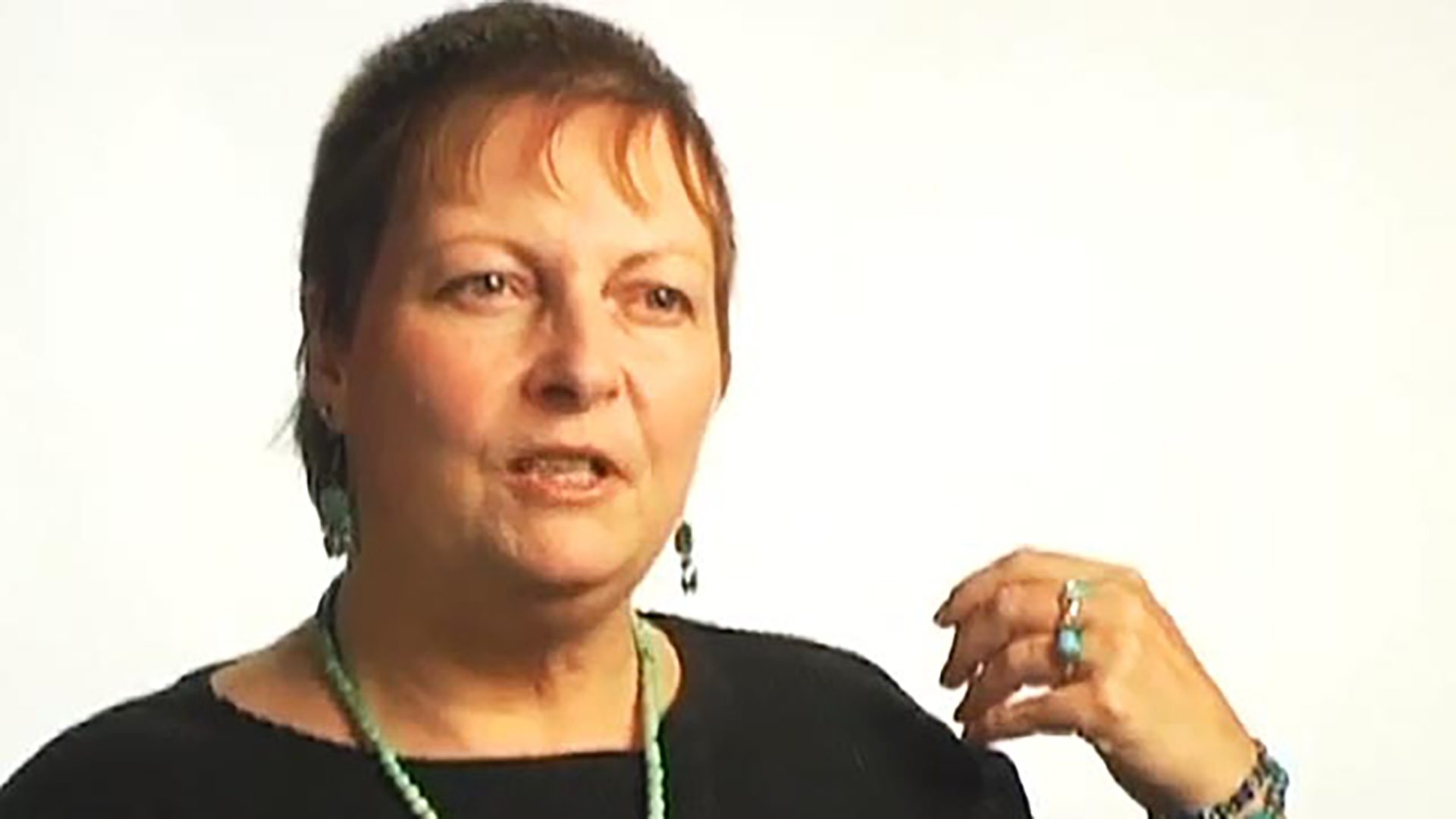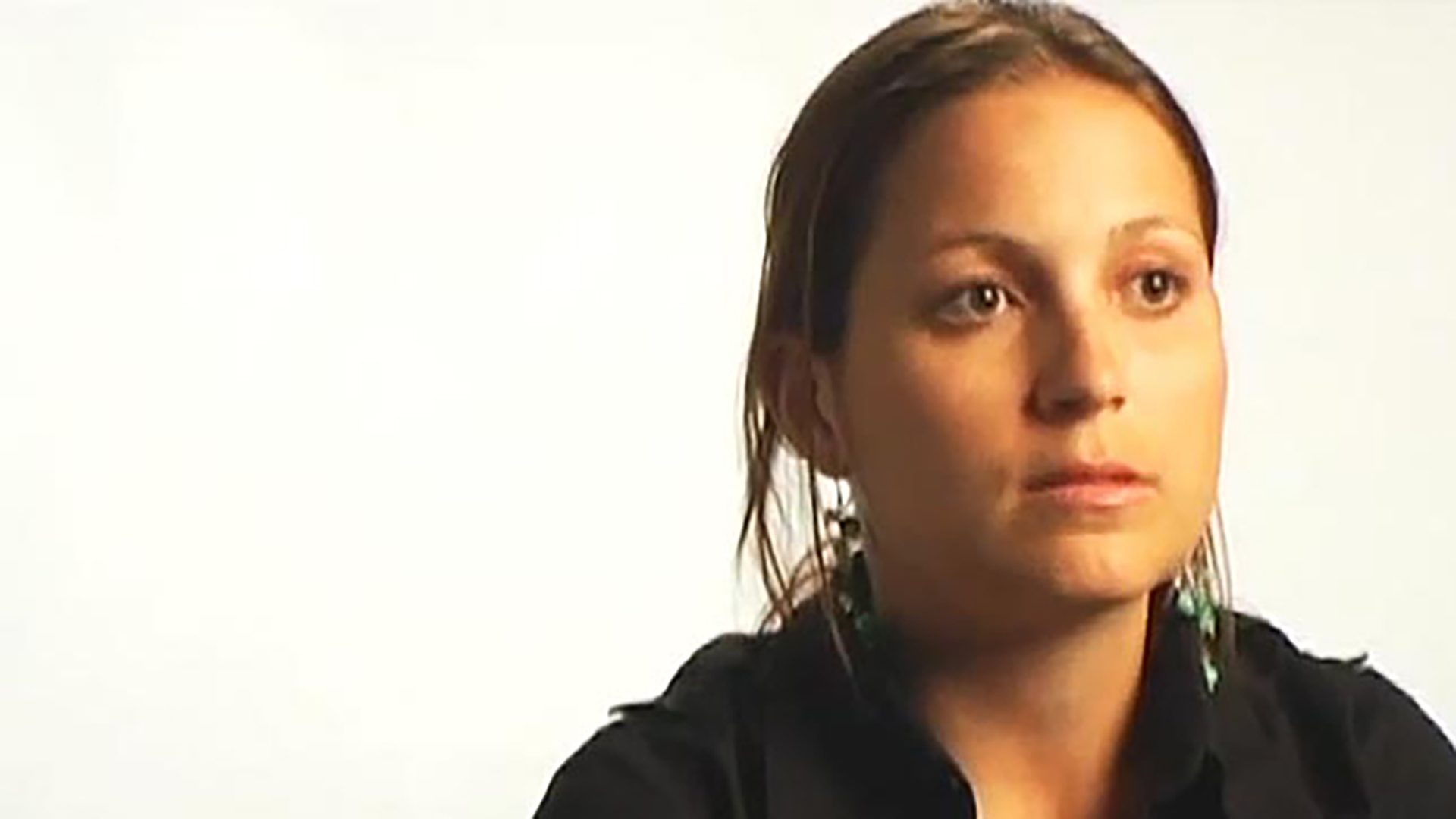Survivor Interview – Elizabeth M.
Elizabeth was diagnosed with chondrosarcoma of the pelvis. She discusses emotional support, aftereffects of treatment, and chronic pain.

I became a cancer survivor in 1967 when I was diagnosed with chondrosarcoma of the pelvis.
I was born with a hereditary bone disease, so I have multiple bone tumors throughout my body. I had noticed that there was growth occurring in one of my bumps and went to a doctor about it. That doctor removed the bone bump thinking it was just a benign tumor. Two-and-a-half years later, it had grown back inside my pelvis and down the inside of my leg. I went to see an orthopedic surgeon. He took an x-ray of my pelvis and said, “There’s nothing wrong.” I was looking over his shoulder and saw that this pelvic x-ray wasn’t normal looking, but I didn’t have any training. I couldn’t just take his word for it, so I went for another opinion. I went to see a doctor that had operated on my brother some years before for one of his benign bone bumps. He was quite clear that this was serious and that it was possibly a kind of cancer. He sent me to see a top orthopedic oncologist. He told me that it probably was chondrosarcoma.
I had an internal hemipelvectomy. They removed portions of my pelvis. I was not given any kind of prosthesis. I know they can do incredible work today, but back in 1967, they couldn’t. What I’m missing is my sitting bone on the right side, the right pubic bone, so there is no birth canal bone on the right side. A piece of hip hangs by itself and it swings a little bit on its own. Because the other one doesn’t have the support on the other side, the other side is loose too. Because of this, I have permanent ongoing stress to those joints. As the years have gone by, it’s gotten very degenerated. So those pieces are what I’m missing. The muscles in that area were also removed. My internal organs had to be cut and rebuilt. Miraculously, it all works. It’s continued to work with difficulty.
It was terrible. My recovery was very difficult. The kind of medications and things that we have now, this procedure can be done, and the patient can be up in a few days. Back then, they didn’t even think I would ever walk again. The doctor told me that, but mentally I blocked that and forgot. Even so, I was pretty immobile right from the beginning. I was in a state of shock because I didn’t realize they amputated a portion of my body. I didn’t realize all those muscles and other pieces and parts inside of me were going to be messed up too.
After about three months, my mother brought my teenage sister in to come see me, and she wanted to play nurse or be a nurse. This brought out her compassionate side, so she would massage and bathe me. As she was working on me, I could feel that my sensations were coming back. The more she worked with me, the more I was able to start moving my legs. She would get me up on the side of the bed and sit me up. That was the weirdest feeling after being flat on my back for so long. One day, she got me standing on the side of the bed. Shortly after that, I said to the doctor, “When are you going to let me out of bed?” He said, “We’ll have physical therapy come up and teach you how to use a wheelchair.” And I said, “I don’t need a wheelchair.” He said, “You don’t seem to remember, I told you, you wouldn’t be able to walk again.” And I said, “But I can. I can.” I sat up on the side of the bed, and I stood up the way my sister had shown me, and I walked. The doctor cried, and I cried, because I didn’t understand why he was crying. It wasn’t a good walk, but I could walk a few steps. Then he ordered real physical therapy for me to strengthen the muscles in my legs. Pretty soon, I was at home.
Within six months, I discovered recurrence. I was back to the doctor, and we scheduled new surgery. It was a year later that I’d had the recurrence and more tissue in that area was removed. I had another recurrence the year after that and surgery, surgery, surgery. That’s the story of my life. As it turned out, I had a total of seven recurrences, seven operations for the pelvis. I’ve since had another nine operations for other things, because of complications.
I’ve had physical late effects. I didn’t have chemo. I didn’t have radiation. For chondrosarcoma, those are not options. Most people who get late effects get it from the chemo and the radiation. I have late effects from the damage to my muscular skeletal system. It’s not stable. It’s constantly going out of whack. Today, I came in here with a cane. Three days ago, I was using my walker. There are times when I know I have to use the wheelchair; I just can’t get around. There are times when I’ve had to use the wheelchair for months at a time while I go through physical therapy and treatments to get myself back up and walking. That’s a constant. That’s what keeps me permanently disabled. I have to think of every step I take. It’s natural to me. I just watch and beware. In the first few years, I was constantly falling. There’s no muscle on the inside of my leg to hold it together, so I would do a split and re-injure myself repeatedly. The last time this happened was about 1989, when I tore my hamstring muscle. As the years go by, these muscular skeletal issues are constantly a problem.
Pain issues are chronic. I’ve been on all kinds of pain meds as the years have gone by. I’ve also learned how to do without them. I prefer to do without them, because when I take pain meds, I get a foggy brain, and that’s not worth it. But there are times when I’ve just had to be on medications. There were a couple of times when I went cold turkey without them. I would go through withdrawal, and it was horrible. There were times when I literally was addicted to morphine, and we had to deal with that. The drugs affect me emotionally in a very negative way. So, it’s important for me to be off of it. I’ve taken self-hypnosis classes. I’ve learned how to meditate. I’ve read every self-help book that ever came out for other problems, and I would incorporate them into my life. I would take classes on relaxation and body awareness. I joined Jack LaLanne’s and worked out all the time strengthening my muscles as much as I could and then have to learn my limitations.
I had two near-death experiences that changed me considerably. Up until then, I was very negative, afraid, fearful that I would die, didn’t have the fighting spirit. During that second near-death experience, I had this message that I would have a child. The doctors had told me I could never have children with my pelvis cut open like that. It was impossible. Amazingly, with everything else they cut out, they didn’t remove my uterus, so it was still functioning. Yet they said, “Don’t get pregnant, because it’s too dangerous. The uterus will enlarge, and it will fall through.” The following year, I did become pregnant. I didn’t realize it for five months, because I still had menstruation. I went through with the pregnancy knowing the risk, knowing the danger. Interestingly, the baby stayed sideways in me. He didn’t turn upside down or drop. So, I have a very special child, who’s now 27. The two near-death experiences also changed me spiritually. I explored every religion there was from that point on, because I felt like I had touched onto something that was beyond the physical, and that gave me a new strength: the spiritual strength. I think we all have it to some extent and it’s up to us each to develop it. But my mantra is “every breath a prayer.” It’s a prayer of thanksgiving and graciousness.
There was a lot of anger. Anger with my family because they couldn’t support me in a way that I thought I needed. I didn’t even know what support was. I didn’t even know the word, but I knew something was missing. I was angry at everyone. The nurses, the doctors, I would take it out on them. For any nurses and doctors out there who recognize me, I’m sorry. I just hope that it strengthened them in their field of work to know that they were able to take it when I was so rude.
I have an online support group for chondrosarcoma patients. The day I was able to create that is the day I went, “This is what I went through it all for.” I went through it alone. I felt like there was no one else who had chondrosarcoma. The doctor told me I’d never meet another person with it. It was that rare. I felt like there were going to be others that I could communicate with. The internet opened that up, and I started getting emails. I would share information, what I had experienced, and set up this online support group. Now there are 250 members. When someone writes in and says, “I have this diagnosis, I don’t know what to do,” it feels so good to be able to get these people together to share their experiences and know that we can help each other understand it. We don’t have to feel alone in this at all anymore.
My name is Elizabeth Munroz, and I’m a 37-year cancer survivor.

